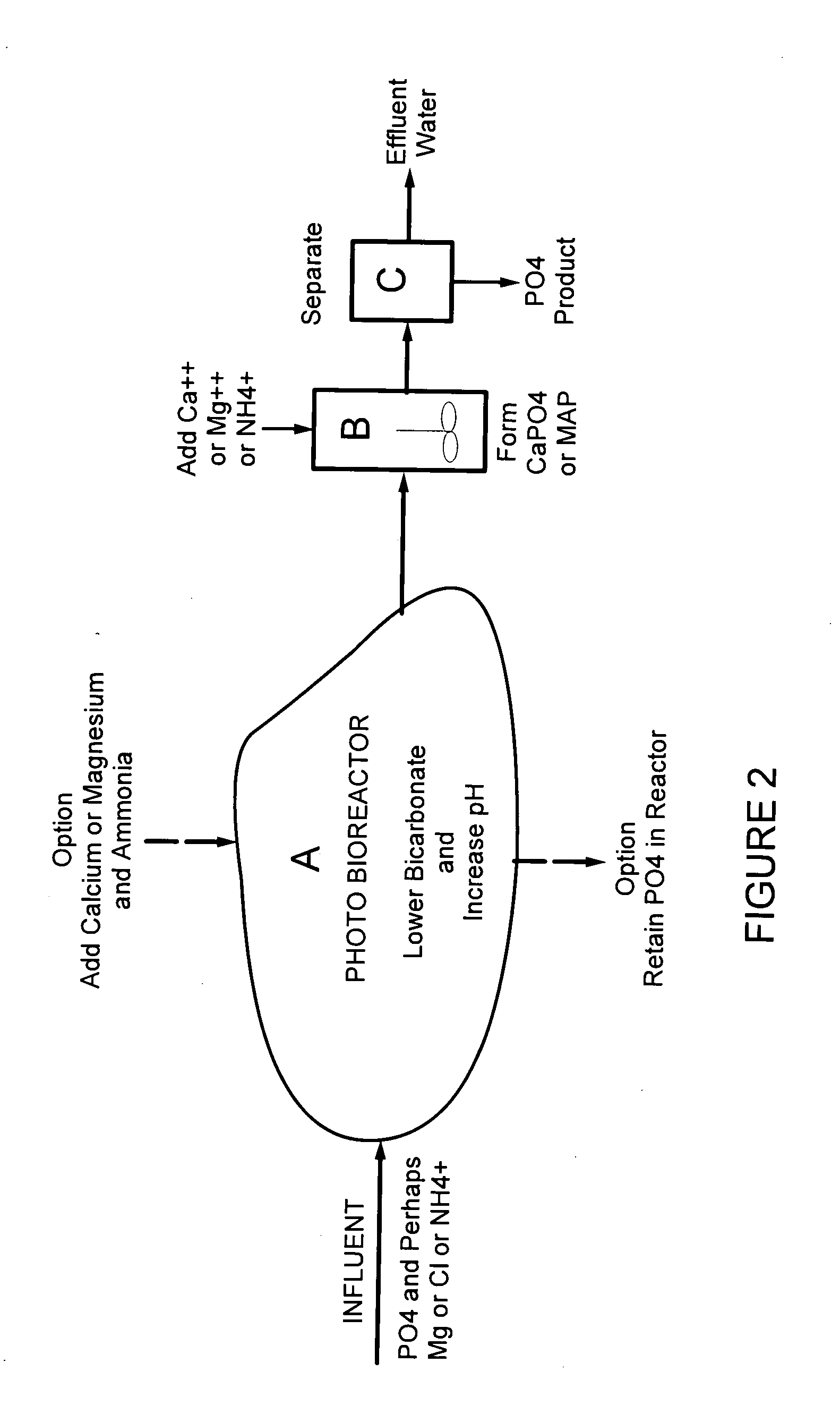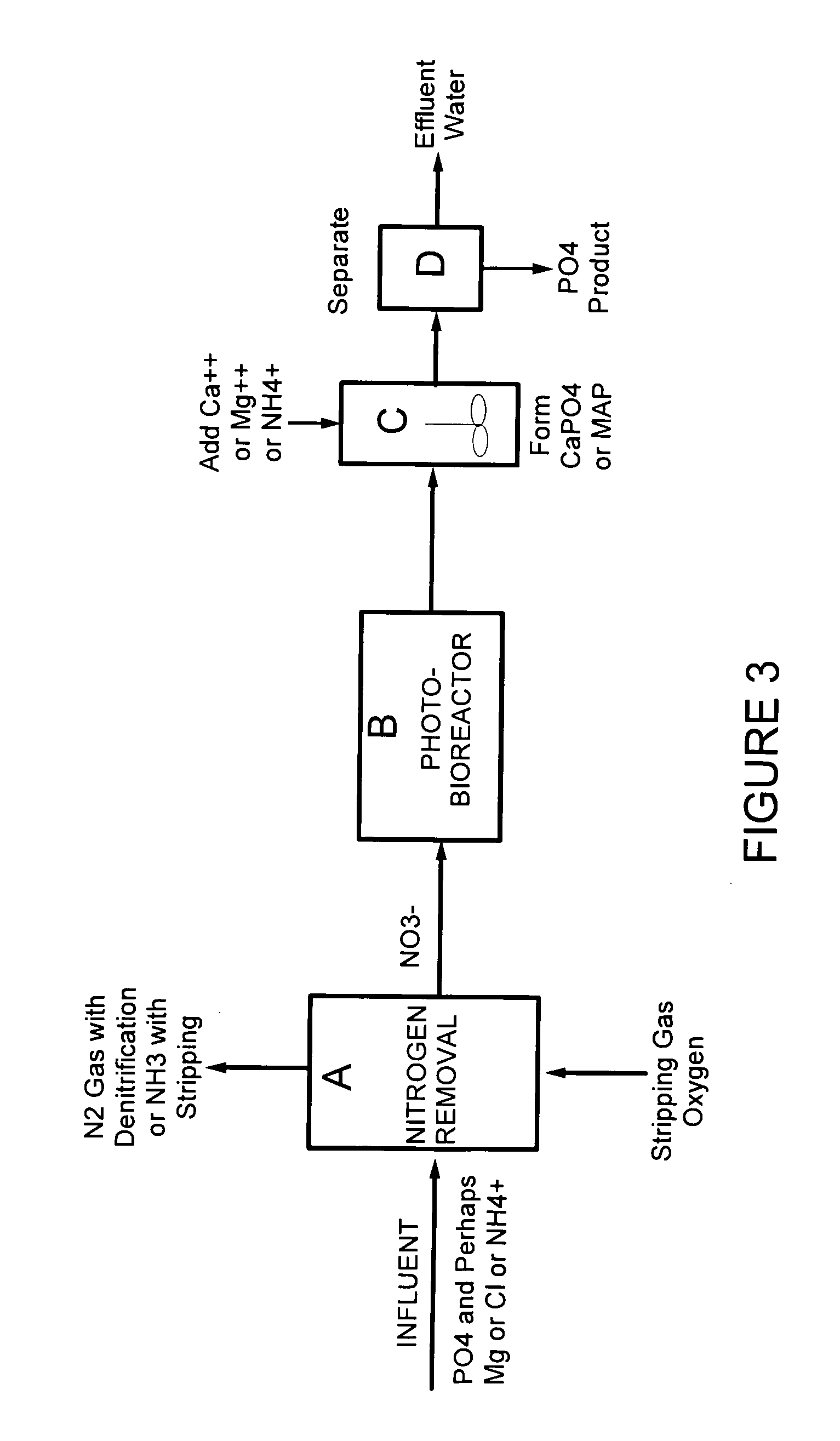Removal and recovery of phosphate from liquid streams
a technology of liquid stream and phosphate, which is applied in the direction of liquid degasification, multi-stage water/sewage treatment, separation process, etc., can solve the problems of unclear if chung adds chemicals, fail to achieve ph, etc., to reduce or eliminate the toxicity of phototrophic organisms, improve the efficiency of bicarbonate removal, and reduce the chemical cost
- Summary
- Abstract
- Description
- Claims
- Application Information
AI Technical Summary
Benefits of technology
Problems solved by technology
Method used
Image
Examples
Embodiment Construction
[0051]The essence of this invention is to reduce the use of costly chemicals commonly used to raise the pH of a liquid stream for the removal of phosphate and the creation of phosphate products that are removed through any of a variety of separation techniques commonly used in chemical engineering applications. Typically, the chemicals used to precipitate soluble orthophosphate include NaOH, MgO, MgOH and CaOH. Those chemicals raise the pH and supply the calcium or magnesium ions necessary to form magnesium-ammonium-phosphate (MAP), apatite, monocalcium (Ca(H2PO4)2) dicalcium (CaHPO4), or tricalcium (Ca3(PO4)2.) phosphate. Air stripping is also used to remove carbon dioxide and thereby increase the pH of the solution to 8.4±. This invention uses autotrophic or phototrophic microorganisms that consume bicarbonate and thereby increase the pH of the liquid stream while decreasing the bicarbonate alkalinity, the two requirements for rapid and complete removal of phosphate from solution....
PUM
| Property | Measurement | Unit |
|---|---|---|
| Metallic bond | aaaaa | aaaaa |
| Permeability | aaaaa | aaaaa |
| Content | aaaaa | aaaaa |
Abstract
Description
Claims
Application Information
 Login to View More
Login to View More - R&D
- Intellectual Property
- Life Sciences
- Materials
- Tech Scout
- Unparalleled Data Quality
- Higher Quality Content
- 60% Fewer Hallucinations
Browse by: Latest US Patents, China's latest patents, Technical Efficacy Thesaurus, Application Domain, Technology Topic, Popular Technical Reports.
© 2025 PatSnap. All rights reserved.Legal|Privacy policy|Modern Slavery Act Transparency Statement|Sitemap|About US| Contact US: help@patsnap.com



